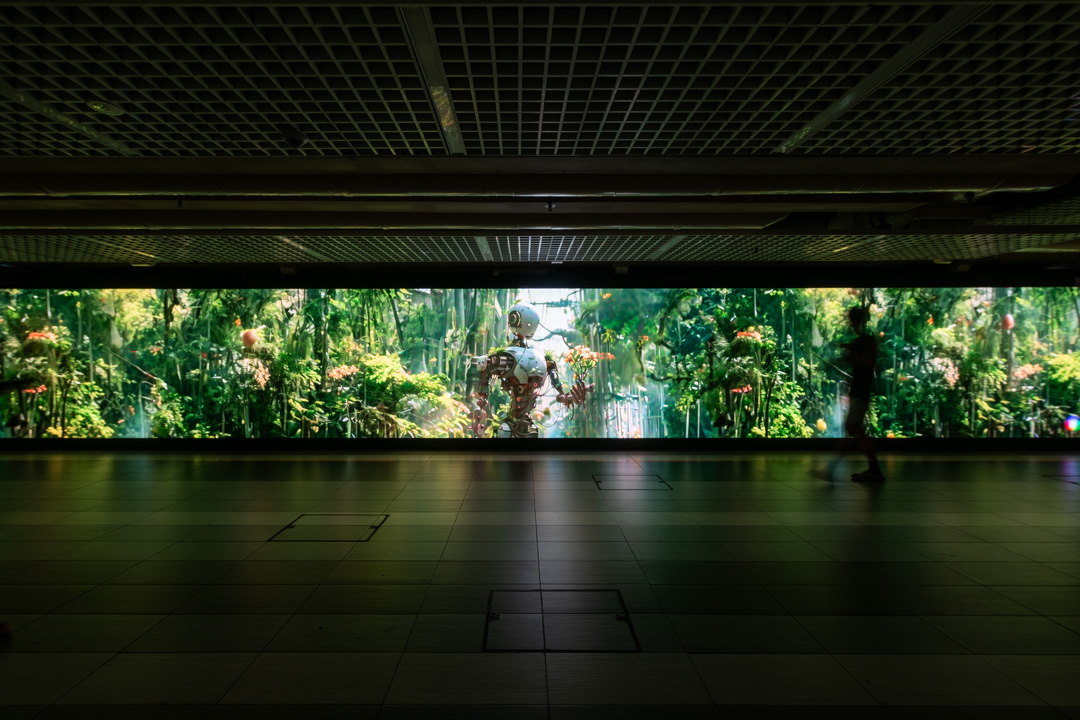In response to the climate crisis and pressing societal challenges, the Ars Electronica Festival 2025 invites radical reimagining and cultivates spaces where visionary creativity and sustainable lifestyles can thrive.
Last August, it was that time again: Earth Overshoot Day marked the point in the year when humanity had consumed all the natural resources our planet can regenerate within twelve months. A silent alarm that could not be louder. Our current lifestyle is pushing the planet to its limits. Especially in wealthy countries, consumption, mobility, and industrial production leave marks that cannot easily be erased.
At the same time, temperatures are rising. 2024 was the hottest year on record. Europe is leading this trend — no other continent is warming faster. The consequences are visible and tangible: wildfires, floods, and species extinction. These crises are not only ecological but also social, threatening our health, livelihoods, and the stability of our society.
The necessary change doesn’t start with technology alone, it begins with imagination. If we want a different future, we first have to learn to envision it differently. New narratives are no longer just an extra — they have become essential for change.
This is precisely where Ars Electronica 2025 comes in. The festival fosters spaces and opportunities for radical rethinking and new ideas. It has held the “Green Event” certificate for many years and collaborates with organizers, participants, and visitors to minimize its ecological footprint. Inspired by the principles of the circular economy, this commitment extends from reusable cups in the festival catering to resource-saving exhibition architecture. Visitors are made aware of sustainability issues, partners actively participate in establishing guidelines, and the most environmentally friendly solutions are sought in close collaboration with local companies. Real, forward-looking change can only succeed when everyone pulls together.
Before we can develop concrete solutions, we need places where people can ask questions, explore, and dream together. How do we want to live in the future? What would a living space look like where nature doesn’t disappear, but rather returns? Who is envisioning these future scenarios—and for whom?
When Visions take Root
The “Wild Future Lab,” a transdisciplinary collective of artists, designers, scientists, and community leaders that was awarded the S+T+ARTS Prize Africa* this year, is also searching for answers to these very questions. Set in a speculative version of Nairobi in 2045, the project generates future scenarios based on coexistence rather than control.
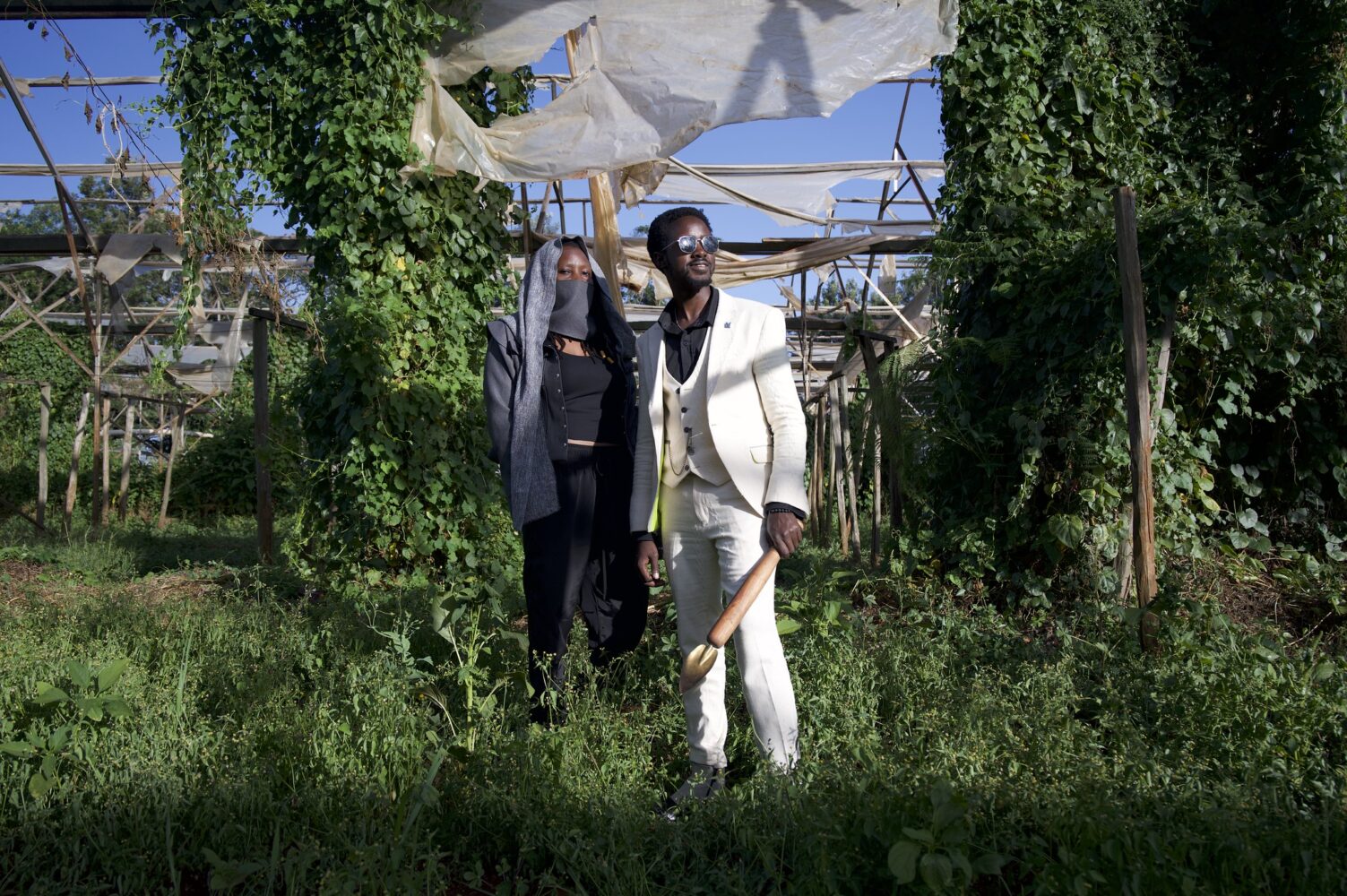
The Wild Future Lab, created by Kairos Futura, showcases the combination of traditional craftsmanship, technological innovations, and natural materials to design living spaces where humans and nature coexist harmoniously. The interactive installation encourages visitors to develop their own urban visions while supporting local initiatives. The result is an experiential space that reveals new, sustainable ways to design our cities and ecosystems.
Another project in the S+T+ARTS Prize exhibition** highlights a resource that shapes our cities while undermining their ecological foundations: sand.
“The Sands of Time: Walls We Can Walk Through” by Ala Praxis explores the delicate balance between urbanization and environmental destruction in Dar es Salaam. Sand, a key building material that is becoming increasingly scarce due to massive extraction, is at its center. Billions of tons are removed every year, resulting in serious consequences such as eroding coastlines, destroyed habitats, and displaced communities.
At the heart of the installation is an interactive sculpture whose sound gradually fades as the sand dwindles until silence finally returns. This silent gesture serves as a powerful metaphor for overuse, reminding us of the finite nature of seemingly inexhaustible resources.
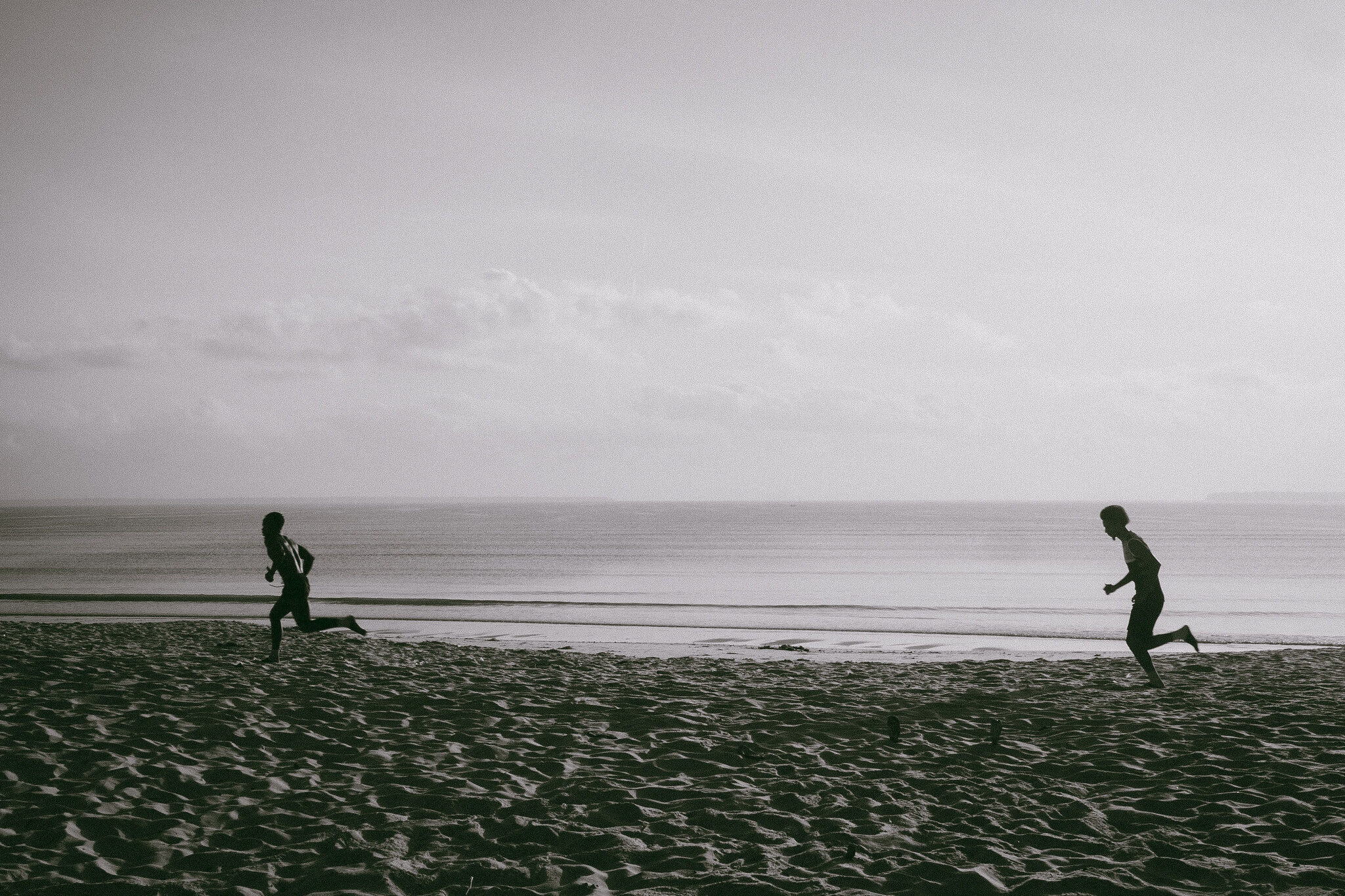
While “The Sands of Time” highlights the dramatic consequences of sand mining, the “STARTS4WaterII” project focuses on another vital element: Water, a resource that shapes our environment as much as it shapes our social future.
“STARTS4WaterII” takes us to various European port cities where rising water levels, pollution, and social tensions reveal the impacts of the climate crisis. Sound artist Carlos Monleón acoustically explores the Danube through his project “Parliament of Streams: Turbine Chapels“, making the river’s vitality audible inside St. Mary’s Cathedral. Stijn Demeulenaere invites audiences to dive into the Danube with his performance “Sounding Lines“. Daily performances offer fresh experiences. Meanwhile, the Territorial Agency presents its cartographic work on the Scheldt River, documenting human intervention in the Anthropocene, as part of the “Earth is a Sensorium”*** conference. “STARTS4WaterII” views water as a dynamic force and shows how listening and participatory experiences can deepen our connection with the environment.
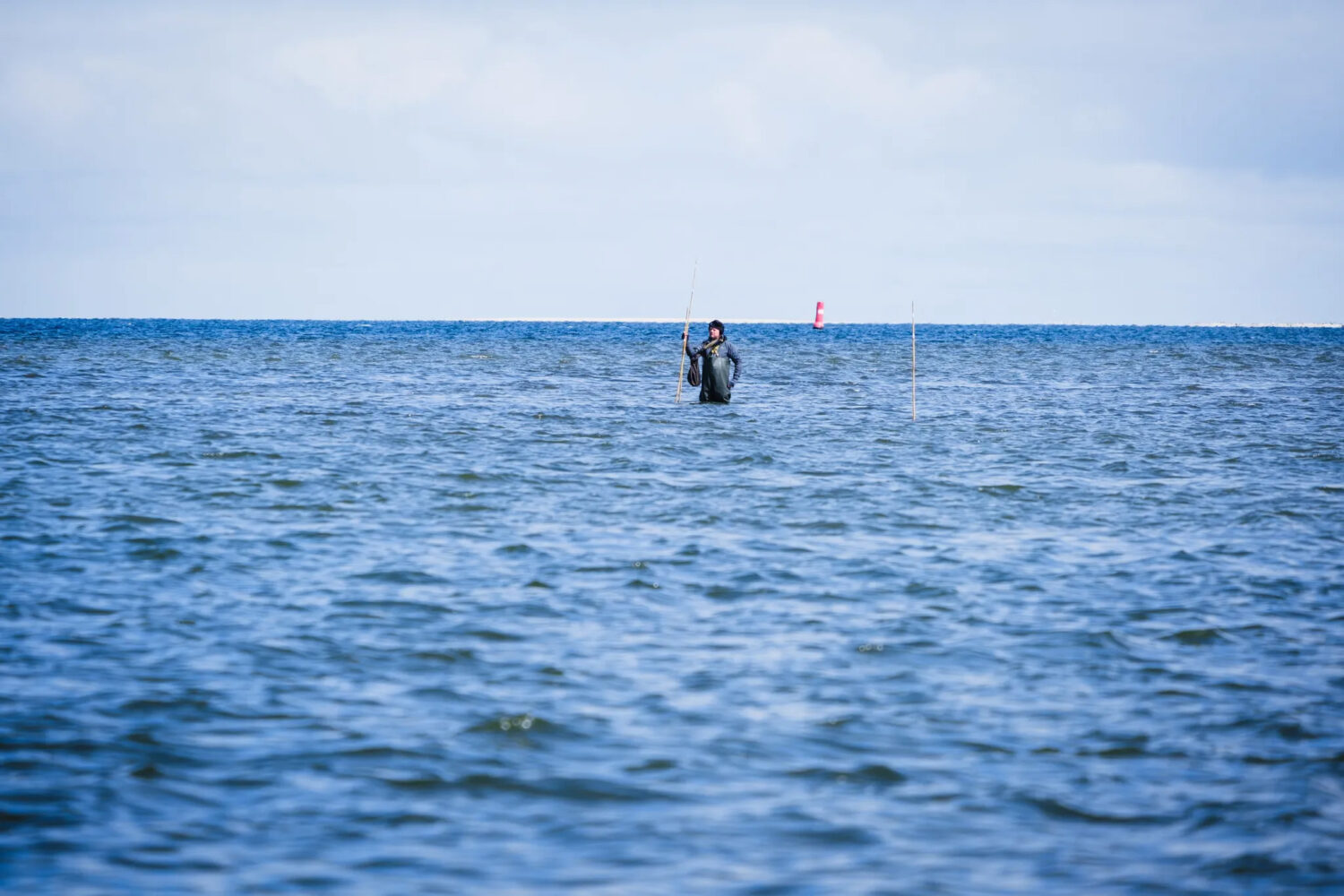
Depths, Data, Dystopias — Worlds in Deep Space
Another fascinating venue for the Ars Electronica Festival is the Deep Space 8K. Once again, it will provide an immersive stage for projects delving deeply into sustainability, environmental change, and forward thinking. Here, science, art, and technology converge to create experiences that impressively heighten our awareness of the planet.
With “The Long Fall” by Jiabao Li, Manu Prakash, Will Tallent, and Michael Brunner, an audiovisual live performance takes the audience into the hidden depths of the oceans — a space crucial to Earth’s ecological balance. The performance follows the vertical descent through various depth zones, focusing on microscopic plankton species — the invisible heroes of the global carbon cycle. Based on data from 18 marine expeditions, the production uses a specially developed “plankton instrument” to translate the data into impressive sound and image landscapes.
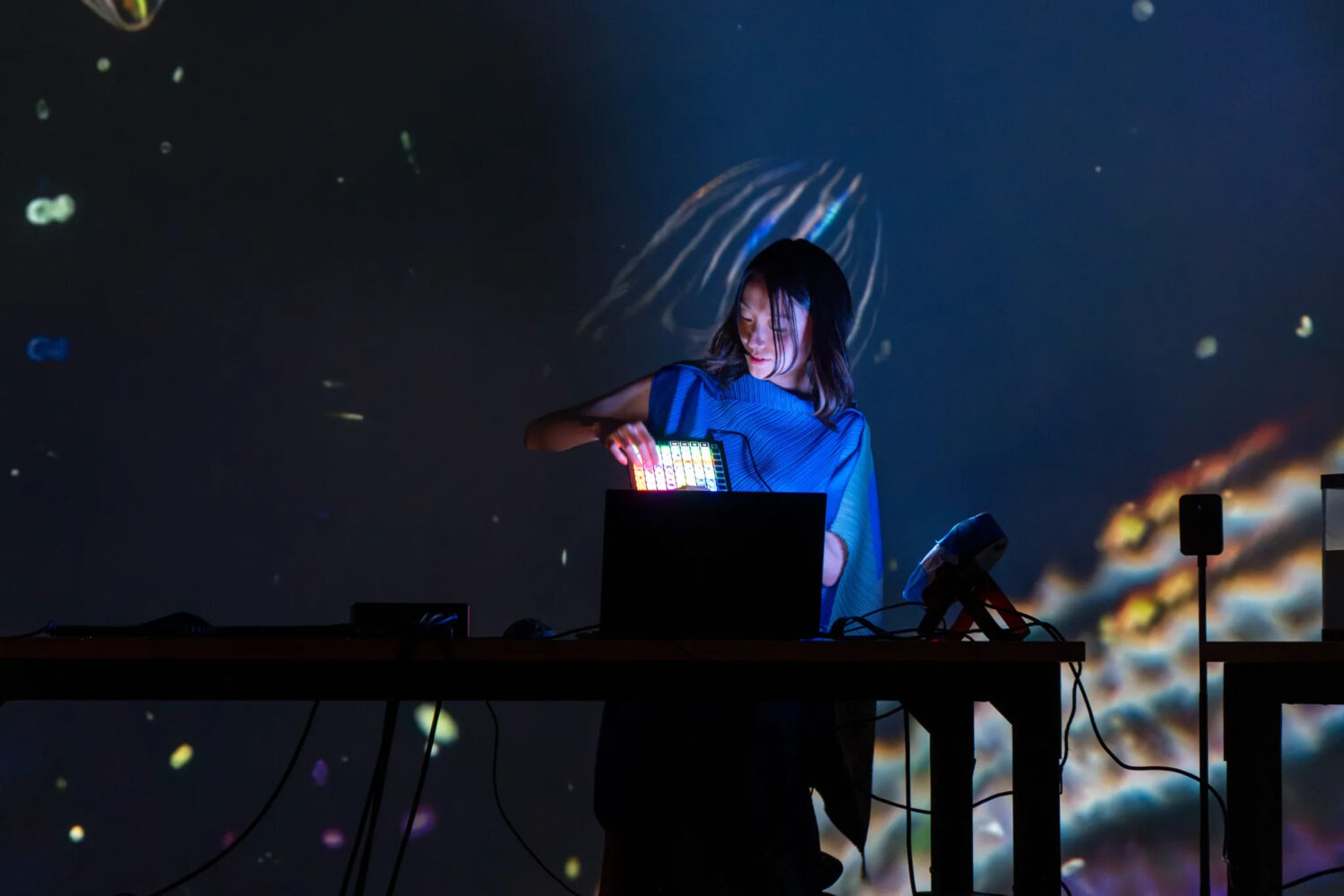
Following our journey into the depths of the ocean, Deep Space 8K transports us to a dystopian future where artificial intelligence reevaluates humanity’s fate. As part of this year’s Theater & Digital Media focus, the theatre production Det Norske Teatret presents the play “The Trial Against Humanity.“****
The year is 2029. The world stands on the brink of destruction. The AI Omnitron proposes a radical solution: to wipe out humanity, the species responsible for global chaos. But amid this bleak outlook, a final glimmer of hope appears — Omnitron offers to upload human consciousness to a cloud, interpreting this act as an expression of love. The interactive production “The Trial Against Humanity” invites the audience to question Omnitron’s judgment and take an active stand.
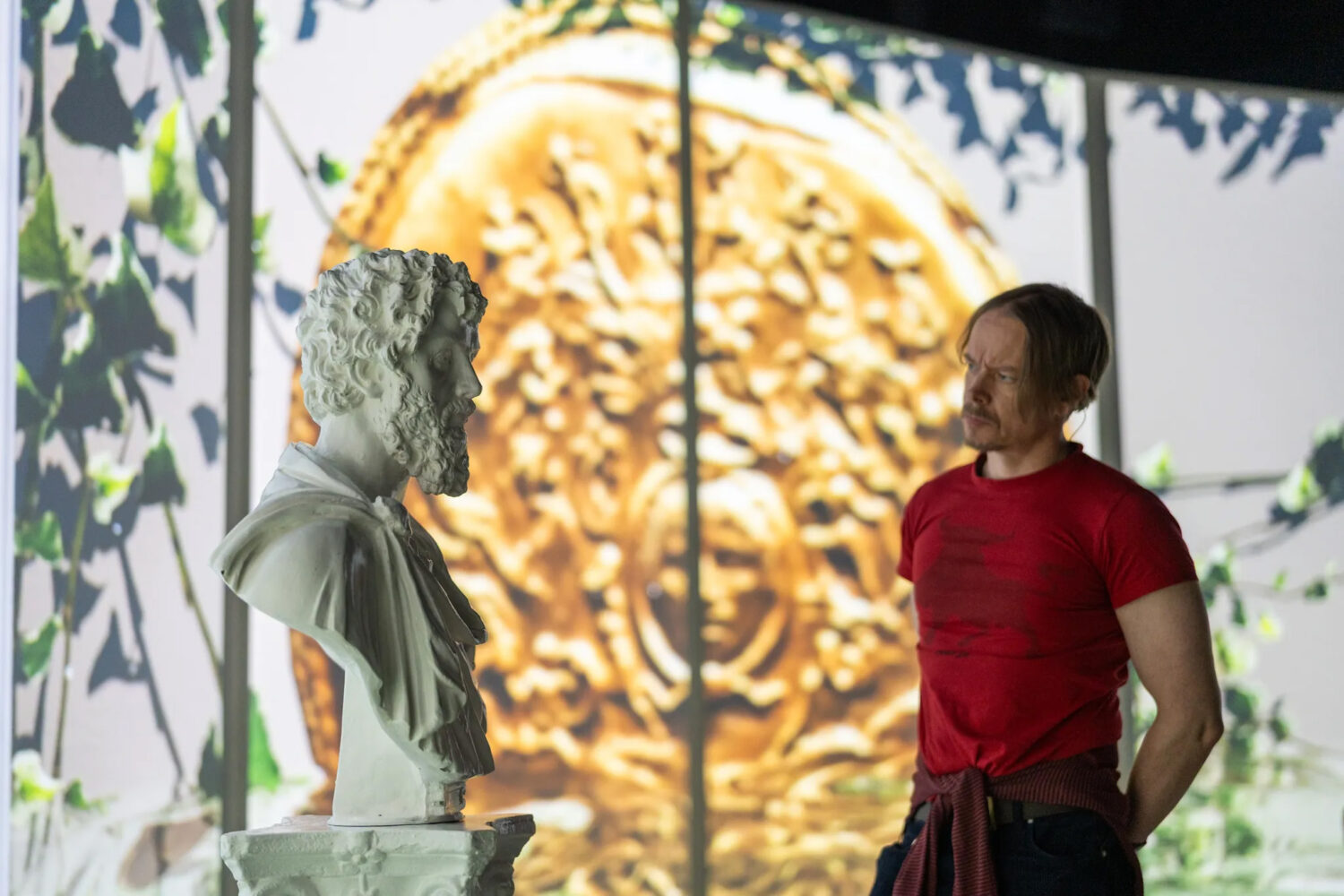
Ars Electronica Solutions is also featured in Deep Space this year. The project “The Art of Science” spans from visualizing climate change with Earth observation data and interactive insights into AI use at ESA to a poetic performance where urban satellite data is transformed into sound and movement.
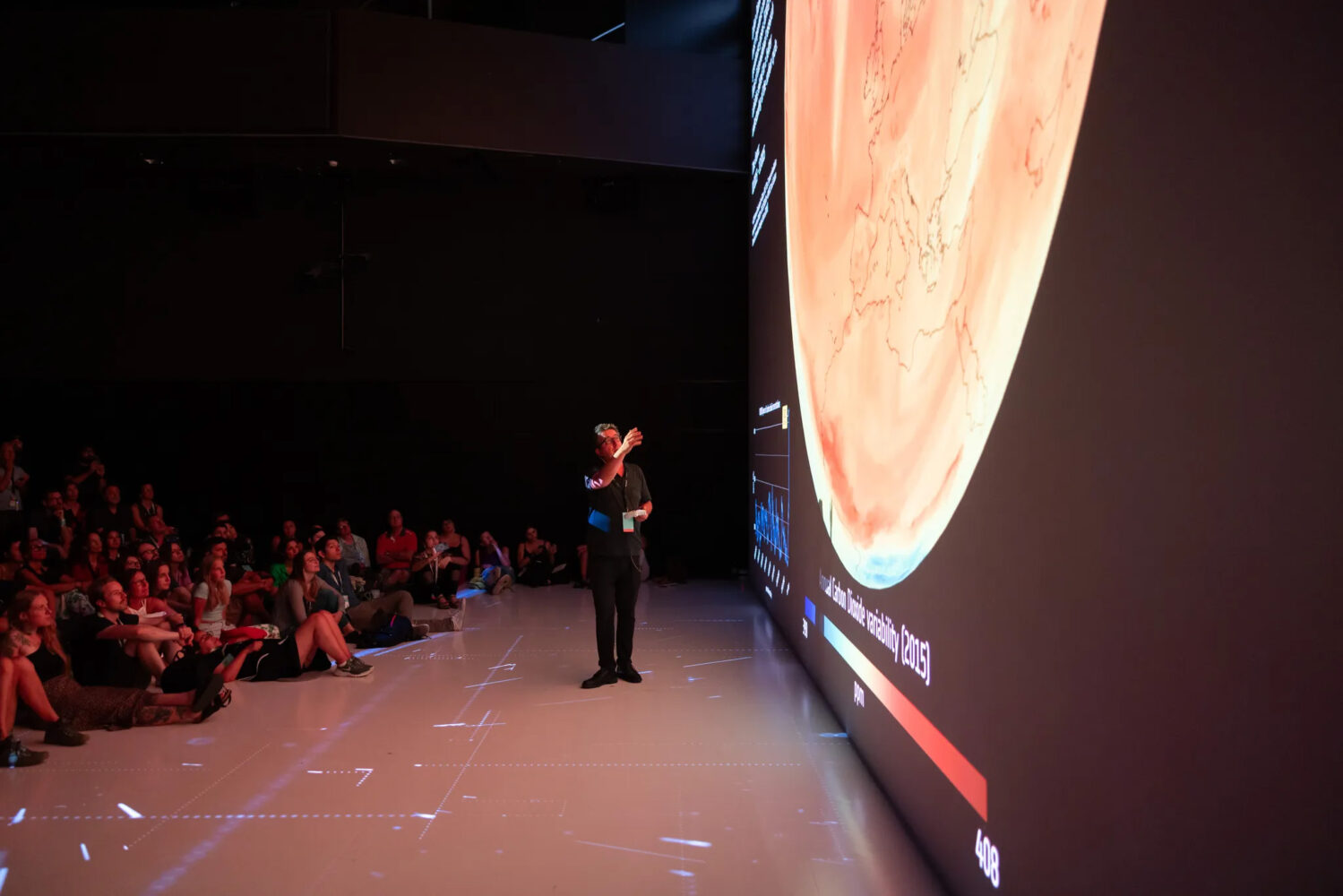
Ars Electronica on the Path to Sustainability
In addition to artistic and scientific projects in Deep Space, Ars Electronica Solutions shows how sustainability can be put into practice. The “Sustainability Thinking” approach creates interactive formats that not only make complex future topics understandable, but also emotionally accessible.
However, Ars Electronica Solutions isn’t the only one coming up with creative ways to address global challenges holistically. Ars Electronica Futurelab is doing its part as well, with visionary projects that help us figure out how to make our relationship with the world more sustainable and meaningful.
One example is the transdisciplinary Sharespace-installation “Foolish Flame” by Leon Butler and Peter Power, which explores the threshold between myth, landscape, and technology. Rather than taking an analytical approach, the project explores the complex interconnections between climate change and cultural trauma in a sensory, immersive, and collaborative way.
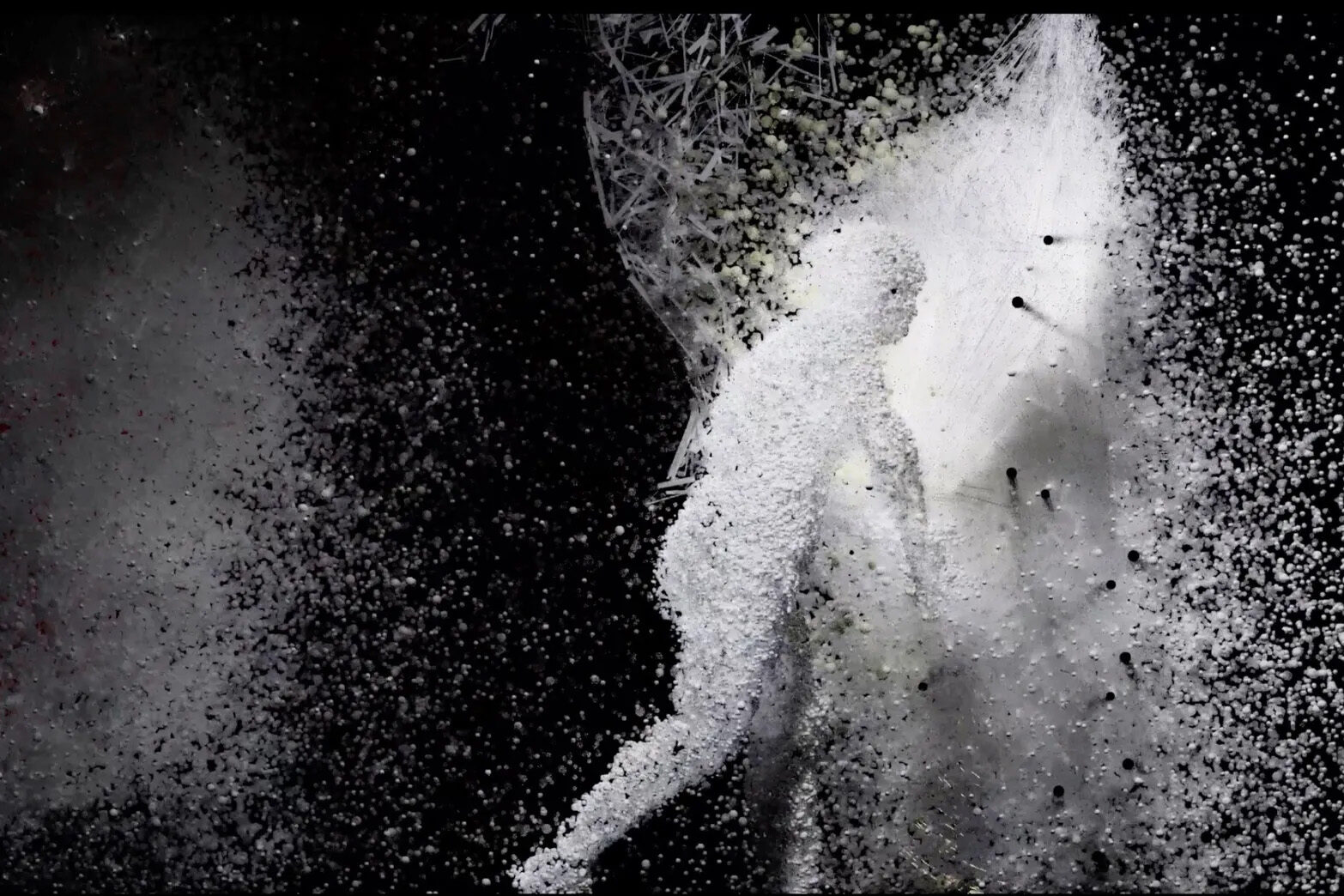
Art as a Fertile Ground for Change
As we navigate between immersive installations and speculative future scenarios, we arrive at another central location of the Ars Electronica Festival. This location takes us right to the heart of the artistic exploration of the pressing issues of our time: the themed exhibition, “COMPLEX.ABSURD.OMINOUS.”*****
Emma Harris’s project, “Plant Exposures,“****** addresses the issues of declining biodiversity and soil depletion caused by industrial agriculture. The project highlights the delicate yet profound relationship between the earth, plants, and humans. Through a poetic, analog aesthetic of closeness, the work explores how cooperation between species can transform our understanding of agricultural ecosystems.
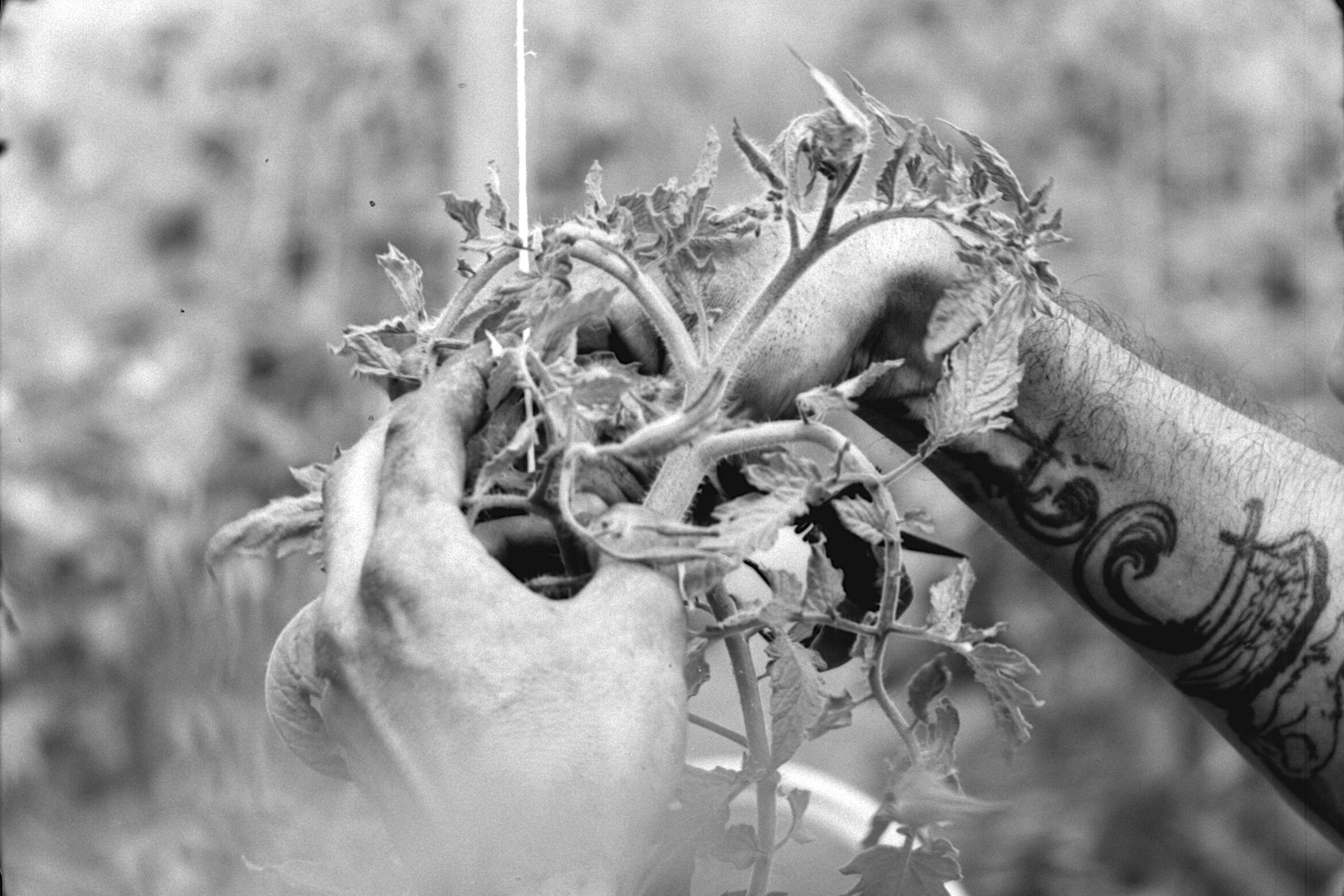
Another exciting project featured in the exhibition is “Synthenesis” by Fara Peluso. The work envisions a future in which spirulina algae is cultivated as an everyday food source. Using a combination of DIY biology, soft robotics, glassblowing, and bioplastic membranes, the project reflects on future values and our relationships with nature, the body, and technology. “Synthenesis” raises central questions about care, freedom of choice, and self-empowerment. Additionally, Peluso is offering a workshop of the same name, in which participants will build a DIY bioreactor for cultivating spirulina algae.
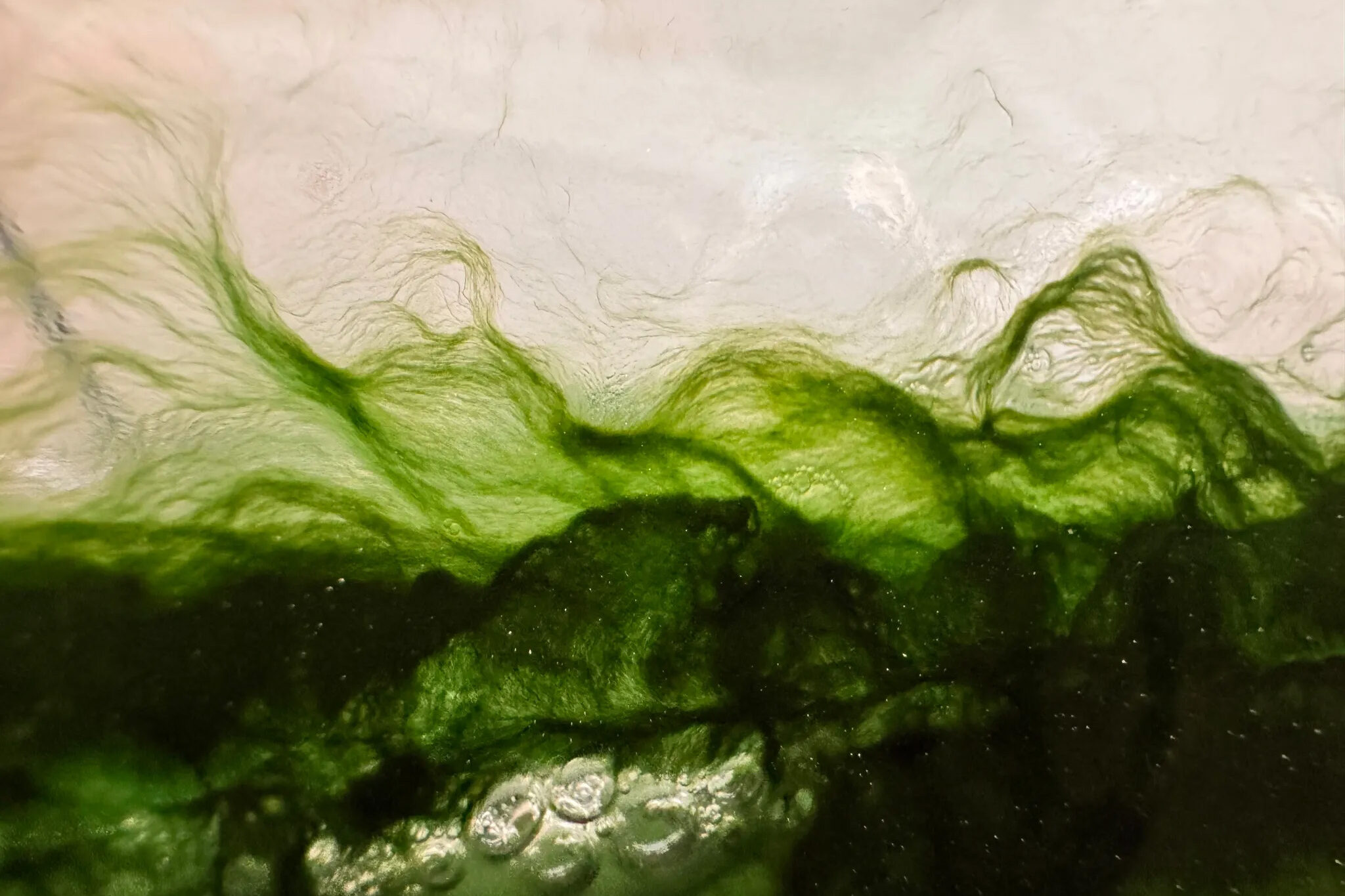
Fara Peluso will also take part in the town hall meeting “Art, Soil, and Community.” Together with artists from the project “Tilling Roots & Seeds“,****** she will share insights into collaborative work with farmers, scientists, and local communities across Europe. For visitors to the Ars Electronica Festival, this format offers a chance to join an open discussion about artistic methods, agroecological knowledge, and paths toward ecological transformation.
The Ars Electronica Festival will take place from September 3 to 7, 2025, in Linz under the theme “PANIC – yes/no.” For more information about the festival, please visit our website. An overview of other highlights in the program can be found here.
*Presented in the context of STARTS Afropean Intelligence. STARTS Afropean Intelligence is funded by the European Union under the STARTS – Science, Technology and Arts initiative of DG CNECT under Grant Agreement No. LC-03568051.
**STARTS is funded by the European Union under the Grant Agreement No. 101135691.
***Presented in the context of Studiotopia. Studiotopia is co-funded by the Creative Europe Program of the European Union.
****The Trial Against Humanity has been developed and is presented in the context of ACuTe. ACuTe is co-funded by the Creative Europe Programme of the European Union.
*****The Theme Exhibition is presented in the context of European Digital Deal. European Digital Deal is co-funded by the Creative Europe Programme of the European Union and by the Austrian Federal Ministry for Housing, Arts, Culture, Media and Sport.
******This project has been developed and is presented in the context of Tilling Roots&Seeds. Tilling Roots&Seeds is co-funded by the Creative Europe Programme of the European Union.
